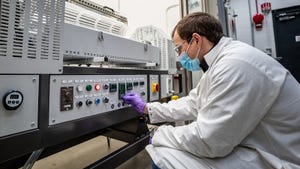13 Concerns That Need to be Met in order to Ensure Lithium-Ion Battery Safety
Lithium-ion batteries require constant monitoring and careful design if they are to operate over long periods with optimum performance.
July 16, 2021

Lithium-ion batteries can contain large amounts of energy in a relatively small space. Their energy density of around 260 watt-hours per kilogram (Wh/kg) is much higher than that of traditional lead-acid batteries (30-50 Wh/kg). To safely contain this much energy requires constant monitoring of a number of battery parameters and to do so requires a battery monitoring system or BMS.
The BMS is an electronic system that manages rechargeable batteries on both a cell and pack level and keeps the system operating safely. Lithium-ion batteries have a relatively narrow voltage range that depends upon their chemistry. If a cell is charged above its upper voltage limit, or discharged below its safe lower limit permanent damage to the cell can occur. In some cases, this damage can also result in the cell overheating, potentially reaching a thermal runaway situation that can cause the cell or even the entire pack to become engulfed in flames.
A BMS is used to monitor the battery voltage, state of charge, temperature, and discharge current and then report that data in addition to using it to determine if the cells and pack are remaining in their safe zone. During charging the BMS can also balance the voltage of the individual cells to maintain optimum performance.
Let’s walk through the situations within lithium-ion battery cells and packs that can cause concern and what a BMS to make lithium-ion battery packs produce more power while ensuring safe operation. Where specific companies are named, it is our intention to provide examples of how BMS and other battery safety needs are being commercially met.
Kevin Clemens is a Senior Editor with Battery Technology.
About the Author(s)
You May Also Like





